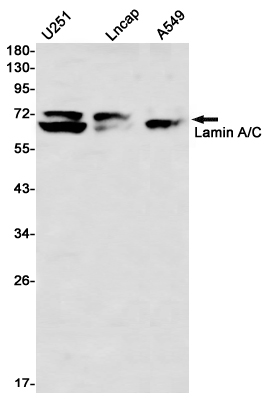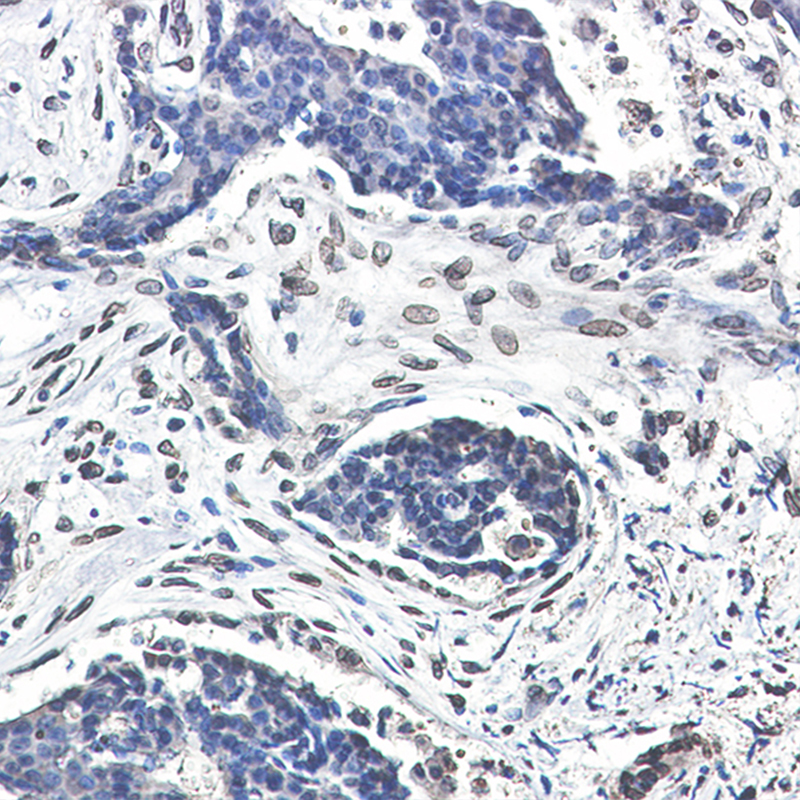Recombinant Lamin A/C Monoclonal Antibody
For reference only. Please follow the manual included in your kit for instructions.
Catalog Number
RD87050A
Product Name
Recombinant Lamin A/C Monoclonal Antibody
Catalog Number
RD87050A
Clonality
Monoclonal
Purification Method
Affinity purification
Isotype
IgG
Host
Rabbit
Background
The nuclear lamina consists of a two-dimensional matrix of proteins located next to the inner nuclear membrane. The lamin family of proteins make up the matrix and are highly conserved in evolution. During mitosis, the lamina matrix is reversibly disassembled as the lamin proteins are phosphorylated. Lamin proteins are thought to be involved in nuclear stability, chromatin structure and gene expression. Vertebrate lamins consist of two types, A and B. Alternative splicing results in multiple transcript variants.
Immunogen Information
Immunogen
A synthetic peptide of human Lamin A/C
Gene ID
4000
Swissprot
P02545
Synonyms
70 kDa laminCardiomyopathy dilated 1A (autosomal dominant)CDCD1CDDCCMD1ACMT2B1EMD2FPLFPLDFPLD2HGPSIDCLamin ALamin A/CLamin A/C like 1LaminLamin CLamin-A/CLDP1LFPLGMD1BLimb girdle muscular dystrophy 1B (autosomal dominant)LMN 1LMN A
Calculated MW
14kDa
Observed MW
16kDa
Applications
Reactivity
Human,Mouse
Tested Applications
WB,IHC-P
Conjugation
Unconjugated
Dilution
WB 1:1000-1:2000, IHC 1:50-1:100
Concentration
300 μg/mL
Storage Buffer
50mM Tris-Glycine(pH 7.4), 0.15M NaCl, 40% Glycerol, 0.01% Sodium azide and 0.05% protective protein
Storage Instructions
Store at -20°C Valid for 12 months. Avoid freeze / thaw cycles.

